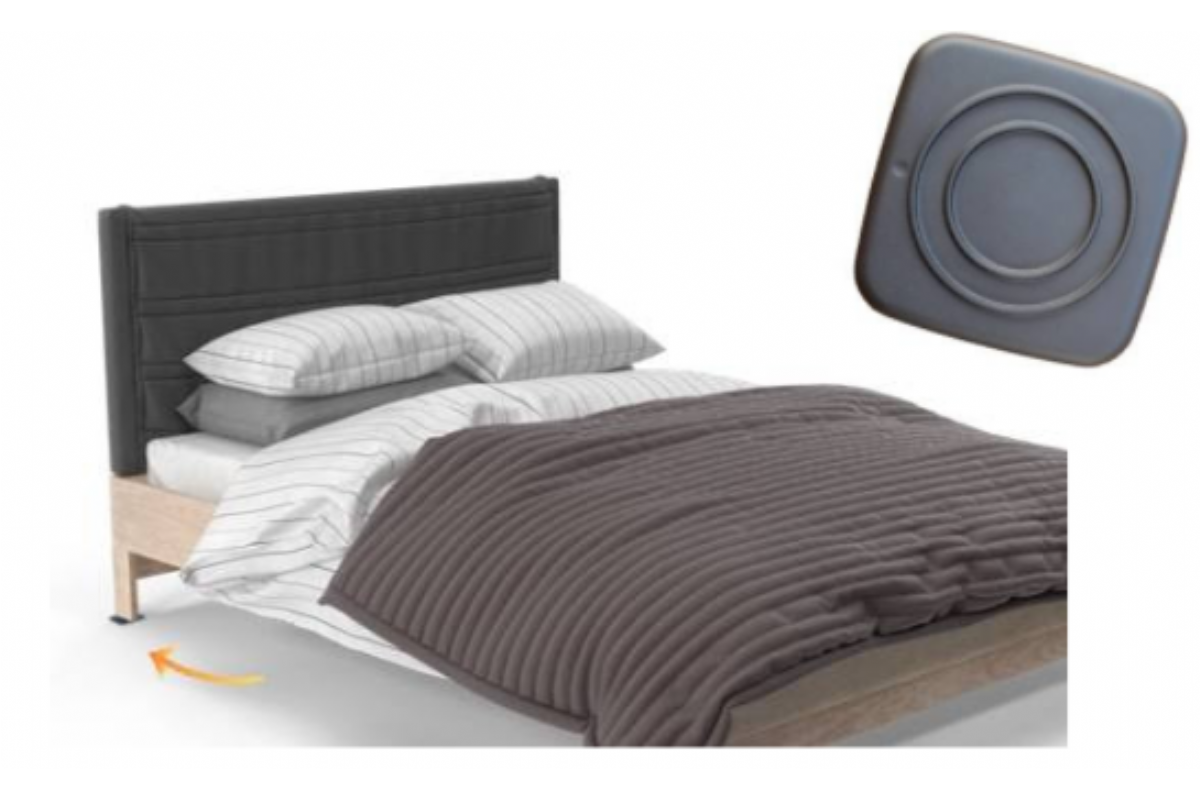How does Sleepsense work?
Sleepsense uses Ballistic Cardiograph technology (BCG). Sleepsense sensor sits under the 2 headend castors. When the human body's heart beats and breathes, it causes the body to move slightly and this creates movement signals. Sleepsense uses sensor technology to detect the mechanical action of the heart as it beats, and AI to process and generate the heart rate and respiratory rate data. Sleepsense is capable of detecting minute pressure and movement changes on the bed allowing for recognition of the finest movements when someone is in bed.
Sleepsense has multiple Alerts:
- Resident leaving bed
- If the resident has been out of bed too long
- How many times the resident was out of bed
- When the residents heart rate stops
- Vitals - Heart rate and Breathing rate
How does Sleepsense improve sleep for the residents
Improvement in sleep can be addressed through the use of the sensors by less disturbance caused by entering and checking the resident while asleep. Experience has demonstrated that less disturbance also reduces the waking time in the night and other issues such as visiting the toilet and then the challenges of returning to sleep. When a person wakes at night they often need to visit the bathroom creating risks of falling.
The reports generated by the device provides helpful information on how to track and improve the quality of sleep, useful in understanding the effect of medications and can also provide insights on the effectiveness of psychotropics including sedation and analgesia. The review of sleep patterns over time supports clinical decision-making for pharmacists and GPs with RMMR reviews, can be presented at MAC meetings and used in understanding mood disorders and cognitive changes.
How can the clinical team use the Sleepsense reports?
The reports the reports can provide an overview of the person’s quality of sleep, periods of wakefulness, movement in and out of bed, adherence to pressure care regimes all of which assist in determining:
- Medication effectiveness and opportunities for deprescribing psychotropic cases of medications that affect alertness and have many serious side effects
- Mental health and opportunities to support improved quality of sleep to reduce depression and anxiety, the prevalence of which is very high in residential aged care.
- Decline and deterioration which can be seen when patterns of sleep change such as greater restlessness and agitation with changes in dementia or longer periods in bed when a person may move to a palliative stage of their care.
- Management of pain and support for skin integrity for residents who are immobile or
Sleepsense provides a reliable system of monitoring sleep that until now was based on observations or residents self-reporting.
Understanding patterns of sleep and movement in and out of the bed and lead to better prediction of resident behaviour and improve the timing of staff support that moves care to proactive than reactive actions.
How can Sleepsense be used for unannounced Aged Care Quality and Safety Commission visits?
Sleepsense supports 7 out of 8 of the Quality Standards, in particular Standard 1 and Standard 3. Showing the reports and how they inform care will provide the Commission with evidence of how the Sleepsense supports the resident’s wellbeing. Evidence of Sleepsense used for:
- Family and resident case conferences
- Care planning
- Residential Medication Management Reviews (RMMR)
- Medication Advisory Committee (MAC) meetings, and,
- Linking of the use of Sleepsense with the organisation’s policies and procedures.
Innovation that improves data informed care is likely to be viewed very positively by the Commission.

